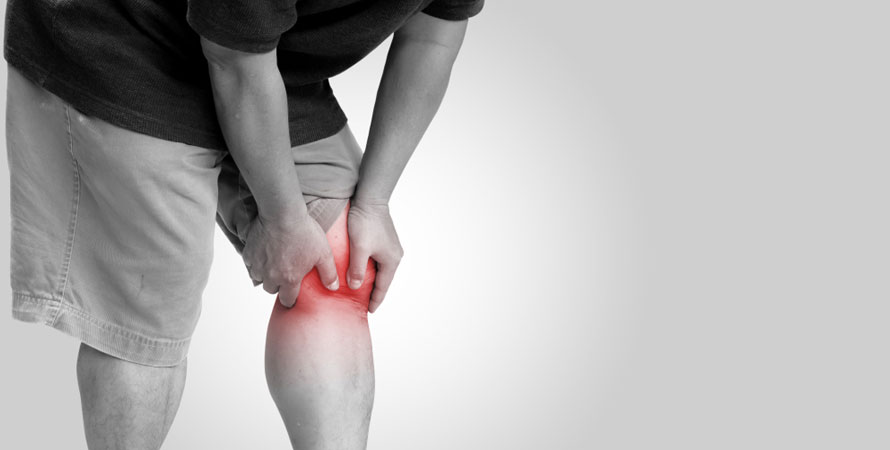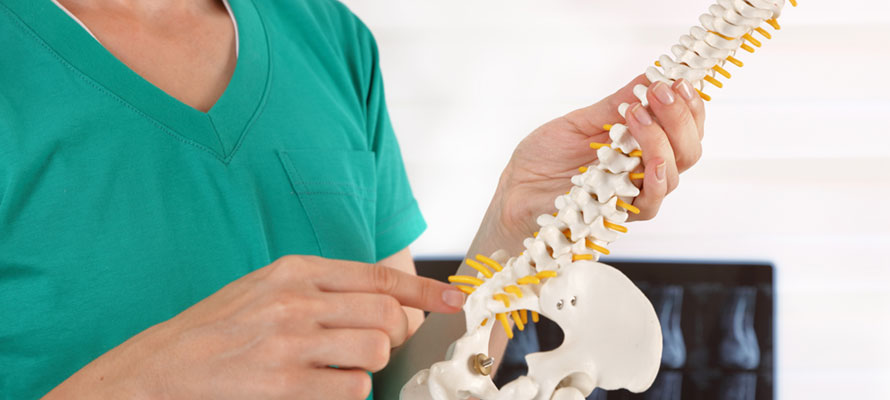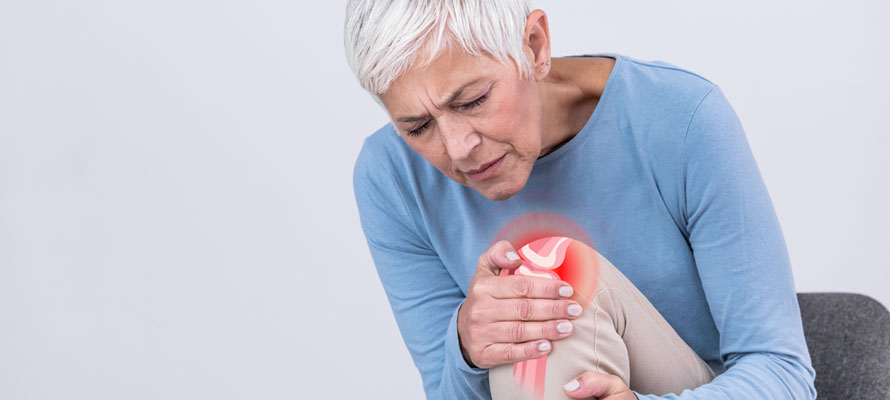An Overview of Osteoarthritis
Osteoarthritis is a common condition affecting millions of people worldwide. About 3.5 million Americans are suffering from it. The disease, a condition wherein any joint in the body can be affected, is irreversible and chronic.
However, unlike other forms of arthritis, this doesn’t affect any other organs of the body. Knees and feet are often the most affected areas as they bear our body weight. Although, it is not uncommon in the joints of the hands, which are more in use.
The joints of the human body comprise a junction of two bones. The ends of the bones are lubricated by a tough, smooth, slippery tissue called cartilage. The cartilage acts as a protective coating for the bones, preventing them from rubbing against each other and facilitating motion in the joints.
As you grow older, you accumulate more wear and tear in the joints, which is one of the causes of osteoarthritis. However, when the cartilage wears out, the tissues around the joint jump into action and initiate a repair process to help with the joint’s smoother functioning. Hence, some of us may not experience too many symptoms or discomfort.
Leading Causes of Osteoarthritis
The exact causes of osteoarthritis are not known. It is mostly attributed to the accumulated wear and tear of the cartilage over time. There are, however, several factors that contribute to the damage of the cartilage.
- Obesity – When a person is obese, the knees have to work harder to support the extra weight. This leads to faster degeneration of the cartilage. Obese people mostly have arthritis of the knees and hips.
- Joint Injuries – Joint injuries are quite common in people who indulge in playing sports. They can also be a result of accidents. An injury involving tearing of the ligaments, cartilage, or joint dislocation may have occurred years ago and poses a risk factor for osteoarthritis.
- Heredity – For some people, the condition runs in the family, especially if you have a joint defect or were born with congenital malformation of the joints. Your genes are very likely among the leading causes of osteoarthritis.
Some rare forms of osteoarthritis are linked to genetic factors responsible for the production of collagen. Collagen is the protein responsible for maintaining the health of the connective tissues.
- Occupation – Some occupations are prone to a higher risk of arthritis. If your job involves a lot of physical labor like squatting, taking the stairs, or kneeling, you are likely to develop joint pain and stiffness.
- Medical Conditions – People with medical conditions like hemochromatosis, diabetes, hemophilia, or avascular necrosis can also experience symptoms of osteoarthritis.
For example, in avascular necrosis, there is a lack of blood supply to the bone tissue leading to its degeneration and arthritis. Also, crystal deposits in the cartilage due to gout is one of the causes of osteoarthritis.
- Gender – Studies also show that women are more affected than men. This is because female hormones have a more pronounced effect on the cushioning cartilage. It is more common in women above the age of 55 who have hit menopause.
Furthermore, this is because in older women, the level of the hormone estrogen, which helps against inflammation, drops. Also, women have less stable joints.
- Age – It is another factor in the development of osteoarthritis. The symptoms of osteoarthritis mostly start in the 40s as muscles weaken, weight increases, and the body is less able to heal itself naturally.
What Are the Symptoms that Add Up to the Diagnosis of Osteoarthritis?
Osteoarthritis is a progressive disease, and the symptoms develop over time. Common symptoms of osteoarthritis include:
- Pain – Since the lubrication in the joint movement is compromised, patients experience soreness and discomfort during physical activity.
- Stiffness – Most people who suffer from osteoarthritis complain of stiff joints in the morning or after specific periods of inactivity, like sitting for a long time or sleeping. After the rest period, the joints may feel rigid or hard to move.
- Inflammation – Some patients with osteoarthritis experience swelling around the joints because of fluid accumulation due to bone-to-bone contact. However, it is a less common symptom. Accumulation of fluid, i.e., synovial fluid, however, does cause inflammation of the joints in many patients.
- Tenderness – Being one of the most common symptoms of osteoarthritis, tenderness is a complaint of those suffering from it, i.e., sensitivity on the joint being touched or if slight pressure is applied. It may happen because of the bones rubbing against each other or pinching of the nerves.
- Grating sensation – If you have osteoarthritis, you may also experience a grating sensation as the bones rub against each other. Sometimes you may hear a crack or pop.
Other symptoms of osteoarthritis include loss of flexibility, bone spurs, i.e. extra bits of bone growing around the affected joint. Should you be experiencing any of these symptoms, it calls for you to see a medical practitioner.
Procedures for Ruling Out Osteoarthritis
Suppose you have been experiencing one or more of the above symptoms. In that case, it is best to check with a doctor who can diagnose osteoarthritis accurately, which will mostly be based on your symptoms, and a physical exam to check for swelling, tenderness, weakness of joint, or grating.
Blood tests cannot detect osteoarthritis. However, your doctor may prescribe them to rule out other forms of arthritis. They may also recommend an X-ray to understand the degree of damage and see if there are any calcium deposits or bone deformities.
Rarely will a doctor ask you to get an MRI to diagnose osteoarthritis, but when he does, it is to see if there are any other problems related to your symptoms. If they do see additional issues, they may refer you to a specialist.
Treating Osteoarthritis
Unfortunately, there is no permanent cure for osteoarthritis as this condition is progressive and irreversible. However, there are many ways to manage the symptoms of osteoarthritis and ease the discomfort in patients.
1. Medication
Treatments for osteoarthritis include medications to primarily help relieve pain. Acetaminophen and Tylenol can help with mild to moderate pain. However, prolonged use can lead to damage of the liver.
General practitioners know what treatments will follow after they properly diagnose osteoarthritis. Oral NSAIDs are another alternative in pain management in osteoarthritis. They do have side effects like cardiovascular problems, gastric problems, and kidney damage. Side effects are less pronounced in topical NSAIDs like Capsaicin gels.
If the pain is severe, the patients may also suffer from depression, so the doctor may need to administer Duloxetine.
2. Therapy
Many people think that exercise will increase the pain and increase the damage to the affected joints. On the contrary, prolonged rest of the joints will cause further stiffness in the joints, which is among the common symptoms of osteoarthritis.
One of the best treatments for osteoarthritis is physical therapy. A physiotherapist can help you with exercises that will strengthen the muscles around the affected joints, facilitating movements and reducing pain. Exercises do not have to be too aggressive, and the therapist will recommend them based on your degree of disability.
If you still feel that you are experiencing pain, you can talk to your physical therapist, and he may prescribe a painkiller or suggest putting an ice pack on the affected joint to reduce swelling or a hot pack to alleviate pain, a good example of the best home remedies for osteoarthritis.
Sometimes, he may recommend knee taping as well for helping with the symptoms of osteoarthritis.
3. Surgery
If you have a severe case of osteoarthritis, you can also consider surgical procedures like realignment of bones or joint replacement. In some cases, one side of your knee may be more worn out than the other, in which case you will require a knee osteotomy to shift the body weight from the area that is more worn out. The surgeon will cut the knee to add or remove a wedge.
In case the knee joint is way too damaged, it will involve a knee replacement surgery for replacing the joint with plastic or metal parts to provide support, which is also one of the surgical treatments for osteoarthritis.
4. Natural Remedies
Natural remedies may also work as among the best treatments for osteoarthritis, which could include a good diet. For example, green tea contains compounds called polyphenols, which help reduce inflammation in osteoarthritis.
Turmeric is one of the recognized natural home remedies for osteoarthritis. Curcumin is present in turmeric, which is known to aid with inflammation, pain, and stiffness.
5. Hydrotherapy
A recent development is the use of hydrotherapy. Swimming is an exercise that doctors do recommend for osteoarthritis. In hydrotherapy, the water in the pools is warmer. While the warmth of the water helps with the pain, swimming helps with strengthening the muscles.
Other treatments for osteoarthritis include cortisone or lubricant injections, massage therapy, acupuncture, and supplements. You can also use supportive devices like canes, shoe inserts, or braces to ease your discomfort. However, it is recommended that you check with your doctor before you go for other treatments.
Frequently asked questions about Osteoarthritis
Living with arthritis includes pain, restriction of movement, and difficulty in performing daily tasks. Even regular activities may require supporting devices like canes or mobility scooters. A person may experience difficulties in trying to reach objects, gripping them, and regular household work.
Other tasks like climbing stairs and kneeling can be even more difficult. Different people are affected in different ways depending on the degree of damage.
Osteoarthritis is an irreversible condition. However, there are ways to manage the symptoms and progression. For example, if you have obesity, reducing weight helps relieve a lot of stress on the bearing joints, helping with the pain.
A good diet can also include a good amount of omega -3, and anti-inflammatory substances, flavonoids, and antioxidants can be helpful. For example, fish, ginger, green tea, and turmeric. While these foods can help ease the symptoms, talking to a doctor who can diagnose osteoarthritis properly can help better your condition.
Remember, that you can also ease the condition through some home remedies for osteoarthritis.
As the cushioning cartilage erodes with age, there is a build-up of pro-inflammatory molecules called cytokines. This is one of the main causes of osteoarthritis. The cytokines cause inflammation reducing the natural shock absorption, which leads to painful friction between the bones as the movement becomes restricted.
The target areas of osteoarthritis are the joints. The more a joint undergoes wear and tear, the more it is prone to osteoarthritis. The most common joints affected are knees, hips, big toe, hands, and spine. However, it can also affect the neck, lower back, and finger joints.
The knee is the most common joint affected by osteoarthritis as it bears the entire body weight. Treatment of knee arthritis begins with a reduction of weight to reduce the stress on the knees. Most of the time, treatments for osteoarthritis will involve lifestyle changes and physical activity to make the movement of joints more comfortable, walking aids, and sometimes posture correction.
Conclusion
Osteoarthritis is a slowly developing condition. It may not have an exact cure, but that doesn’t imply that you cannot comfortably live your life.
As soon as you start experiencing the symptoms of osteoarthritis, you should seek medical help to improve your life quality. The symptoms may get worse with time.
General practitioners specializing in this condition will require tests to diagnose osteoarthritis before treatment can begin. Medical procedures are conducted to assess the level of damage in the bones and joints.
Everything aside, prevention is better than cure. It never hurts to watch your weight, exercise, and take a good diet.










